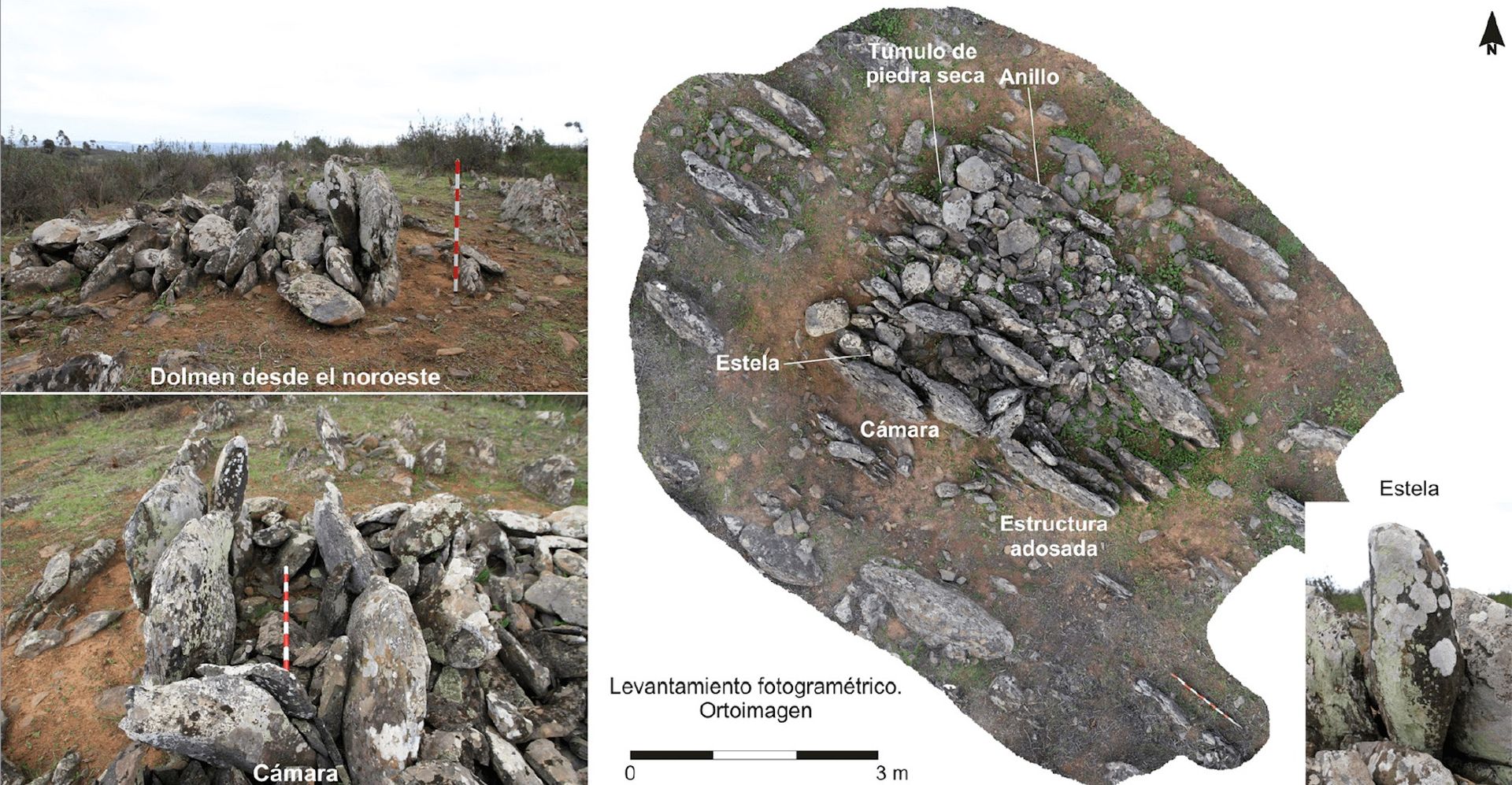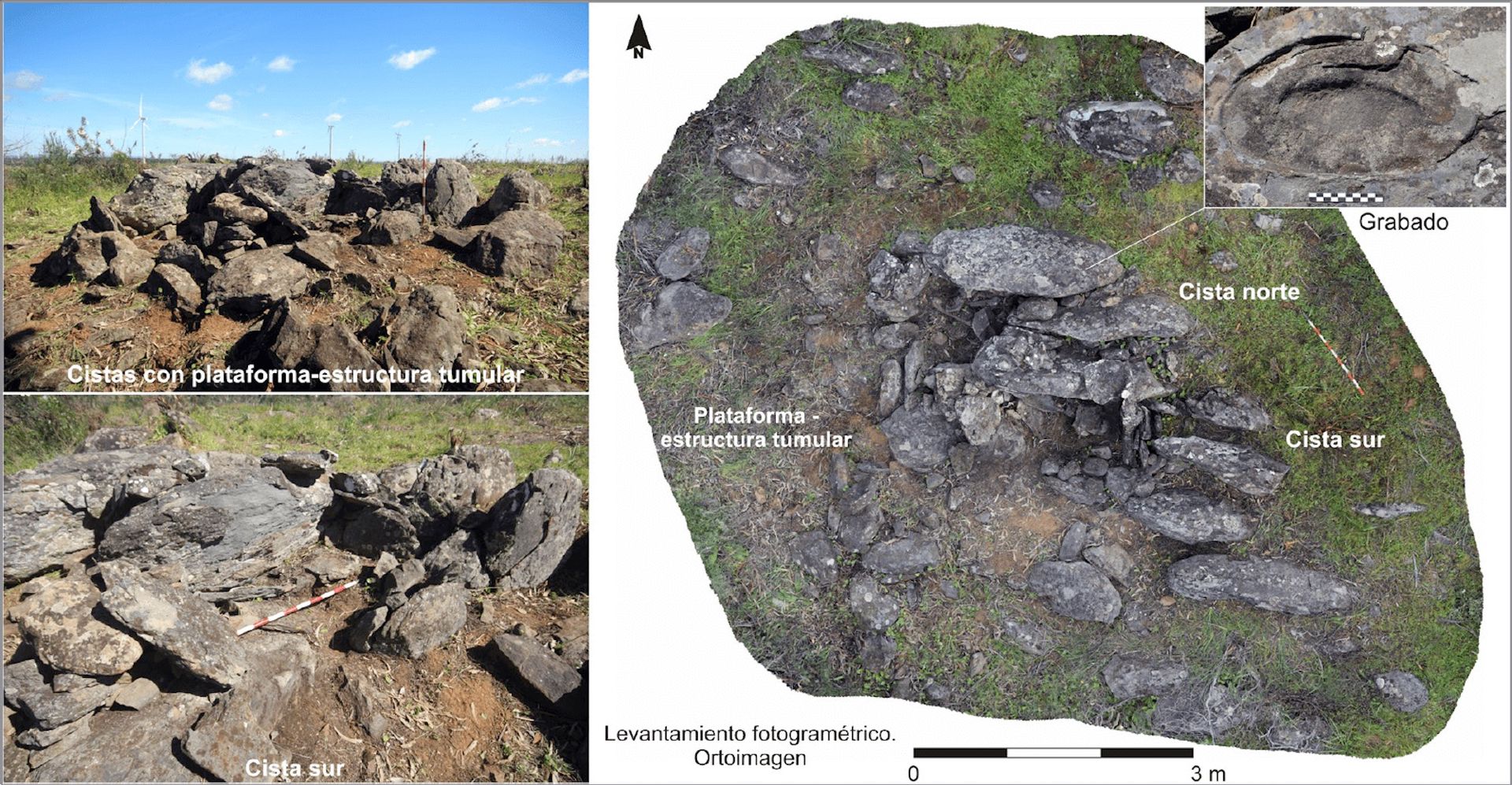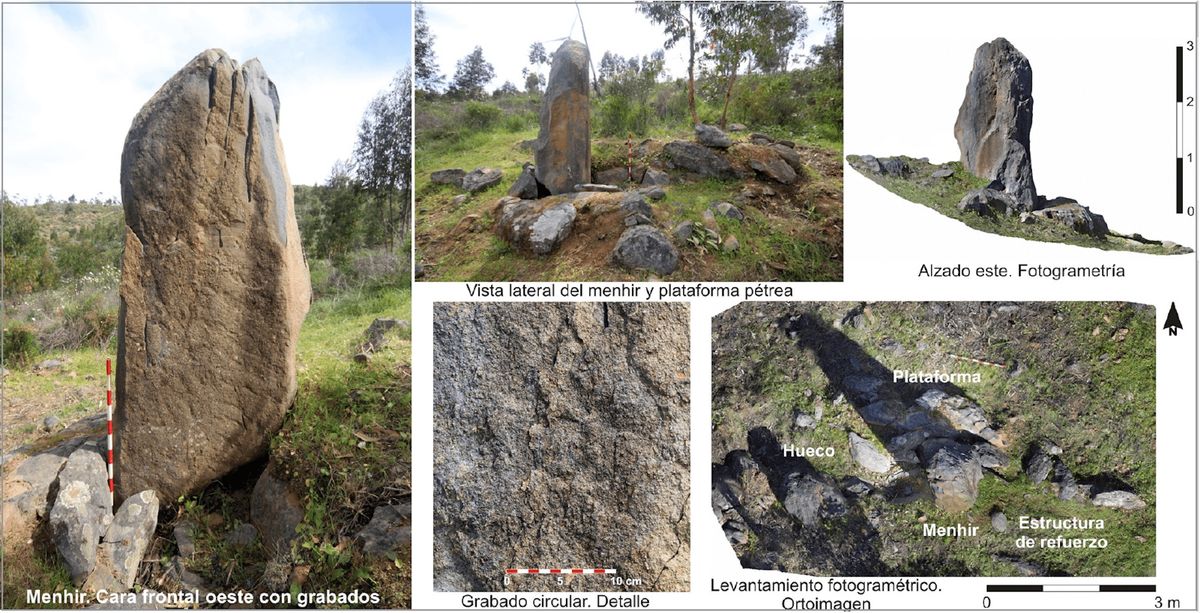One of Europe’s largest megalithic sites has been unearthed in southern Spain. Archaeologists working at La Torre-La Janera, near the city of Huelva, have discovered a remarkable number of standing-stones, dolmens, stone circles and mounds in what may be one of the most significant prehistoric finds in the area.
Work began on the plot of land, measuring 600 hectares, in 2018 after it was surveyed ahead of plans to turn it into an avocado plantation. Megalithic structures were known to exist in the area, but the scale of the discovery is unprecedented.

Remnants of ancient structures at the La Torre-La Janera site in Huelva, Spain Courtesy Universidad de Huelva
The findings from the dig were recently published in the Trabajos de Prehistoria journal, which revealed that 526 ancient standing stones had been found, most of which were toppled. The site contains megalithic tombs and stone circles dating from approximately 7,000 years ago. The majority of the stones seem to have been quarried locally. The report concludes that it is a “unique” discovery on the Iberian Peninsula.
One of the project's co-directors, Primitiva Bueno Ramírez, tells The Art Newspaper: “The discovery of this megalithic site presents three unusual aspects: the quantity of megalithic architecture, which is very rare and even less so in the extreme southwest of the Europe; its magnificent preservation; and the fact that dolmens [tombs], alignments [parallel rows] and cromlechs [stone circles] appear together.”
“It is important to point out that there is still some ground to be explored and it is quite possible that more evidence will be found,” Bueno Ramírez adds.

Remnants of ancient structures at the La Torre-La Janera site in Huelva, Spain Courtesy Universidad de Huelva
According to the Guardian, José Antonio Linares, one of the other co-directors, says it is “the biggest and most diverse collection of standing stones grouped together in the Iberian Peninsula”.
The site is within the vicinity of other known megalithic sites, and not far from the Guadiana River, which separates Spain from Portugal. Parts of the area have been given special protection, according to the journal, and excavations are set to continue until 2026.


